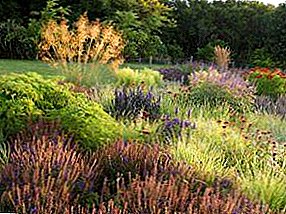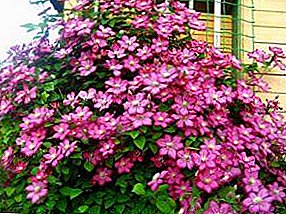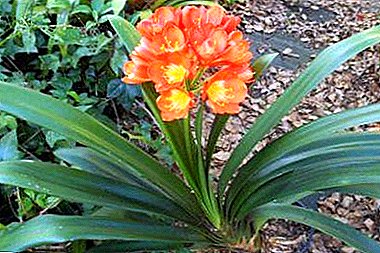
Owners strive to improve and optimize each summer space. It is not only about getting more plants or some useful functions, but also about getting aesthetic pleasure and comfort.
That is why landscape has such a popularity. Although many form their own site, so to speak, on a whim, the best option is still to use some kind of landscape design.
Someone prefers abundant flower beds, others arrange a kind of English garden with spacious lawns, in general, everyone chooses something of their own.
 Using the concept of landscape design is convenient because of the understanding of the final result.
Using the concept of landscape design is convenient because of the understanding of the final result.
You know what actions to take and what outcome you can get.
Of course, within the framework of a particular style, you can choose different variations and this will be your creative contribution..
After all, it is difficult to call, for example, various impressionist artists banal and not original, although they used the same style.
Likewise, when you choose a style for your own garden, you simply choose the vector that is most consistent with your worldview and preferences.
At this period, the trend is Naturgarden. Interesting style for your own garden. Next, and consider in more detail this phenomenon.
What is the style Naturgarden
Readers who have a minimal understanding of English have already translated the term. For the rest we translate, literally Naturgarden - natural garden. If you make an adapted translation, the better this style will sound like a natural garden, eco-garden or something similar.
The basic concept is to make the space closest to nature, without any artificial lawns, curly bushes and similar elements. You try not to imitate nature, but to make a completely natural space, like the one that you can observe on a forest lawn.
The creator of this style is considered Pete Udolf, a landscape designer from Holland, who became famous for his work in this particular style. Like any master Udolf spawned a succession of followers and, in fact, created a new style.
Landscape parks and oriental gardens
 Of course, Udolf is the creator of the new time and creates works in many ways unique and being the product of individual creativity.
Of course, Udolf is the creator of the new time and creates works in many ways unique and being the product of individual creativity.
It was just that he especially managed to work in exactly this style and promote this concept.
Although in general the idea of combining natural beauty with the space in which people live, existed long ago.
Vitruvius, whose works are also used by modern architects, advised to combine the natural landscape and the architecture of cities.
Further, many theorists of architecture also often suggested using naturalness of nature and not succumbing to excessive artificiality of forms.
Therefore, if we consider Naturgarden as a whole, then the concept is to understand nature as the best landscape designer. In your garden, you simply allow nature to continue and do not interfere with the natural beauty.
English landscape gardens
At the time of Louis 14, gardener Andre Lenotre worked at the court as an ardent apologist for the regular French Baroque style. The essence of this era was also in demonstrating the superiority of man over nature. People embodied, including in architecture, their own control over various processes.
 From here, regular French gardens sought the least naturalness.
From here, regular French gardens sought the least naturalness.
Direct and even forms were created there, symmetry variants not peculiar to natural conditions.
Due to this, smooth geometric patterns and harmony of forms were created.
The opposite of this idea was the English landscape gardens and parks.
They focused attention not on unity with nature and perceived man as a part of nature. Therefore, the landscape was created such where human existence was integrated into the original natural conditions.
Such landscape design for the time being was called Anglo-German, now these parks are called simply English. In fact, they are distributed throughout the world.
If you want a typical example, remember the typical description of the estate from the Russian classics. There, almost always the land is not separated from the forest, even a noble house is like a part of the landscape.
The modern option is the various urban parks, in which there are no straight paths and a substantial part is just a natural landscape.
Alpine gardens
Quite a long time ago, representatives of the well-off part of the population were fascinated with collecting plants and sought to plant more exotics on their own plot. Only here the plants did not always take root, in particular, the plants collected in the mountains did not grow on the plain.
 The first to cope with this difficulty was John Blackburn in 1767, who created an artificial alpine landscape, which later received the name of an alpine garden.
The first to cope with this difficulty was John Blackburn in 1767, who created an artificial alpine landscape, which later received the name of an alpine garden.
At this time, this style is especially common as an alpine slide..
After all, to create a composition of many large boulders is not available to everyone, but many people like to create a compact composition of stones.
After Blackburn, Reginald Farrer made a special contribution to this area, who explored Himalayan plants and suggested the basic parameters for the aesthetic evaluation of an artificial garden. At this time, rocky elements are very popular in landscape design.
Origins of landscape design
In a strict sense, landscape design is an invention for the masses, that is, for you. Until the beginning of the previous century, such a phenomenon did not exist at all as superfluous. Know used the art of creating parks and palaces, but in order to make parks for most people, especially no one thought.
In the cities, too, there were not many public recreational zones, the owners of a small piece of land could not afford, and they didn’t particularly think about planting hydrangeas or fezalis and making an alpine slide besides the beds on the plot.
The development of society has led to the need to create more comfortable conditions for people.. In addition, many people freed up more time and began to appear landscape design.
In many ways, this direction was based at the beginning on the work of artists, in particular the impressionists. If you want to know more about this, study the work of Gertrude Jekyll.
"New Wave" in landscape design
In the new millennium began the so-called New Wave in landscape design. Thanks to the previously noted Peter Udolf, who in 2000 won the grand prize at the Chelsea show. The basis of the concept of Udolf in the prevalence of forms over color, the designer combines various forms of colors in his own compositions.
In addition, reliance is made on natural combinations of plants. The compositions are based on perennial plants, which flow into each other, and annual ones are planted between them in small patches.












